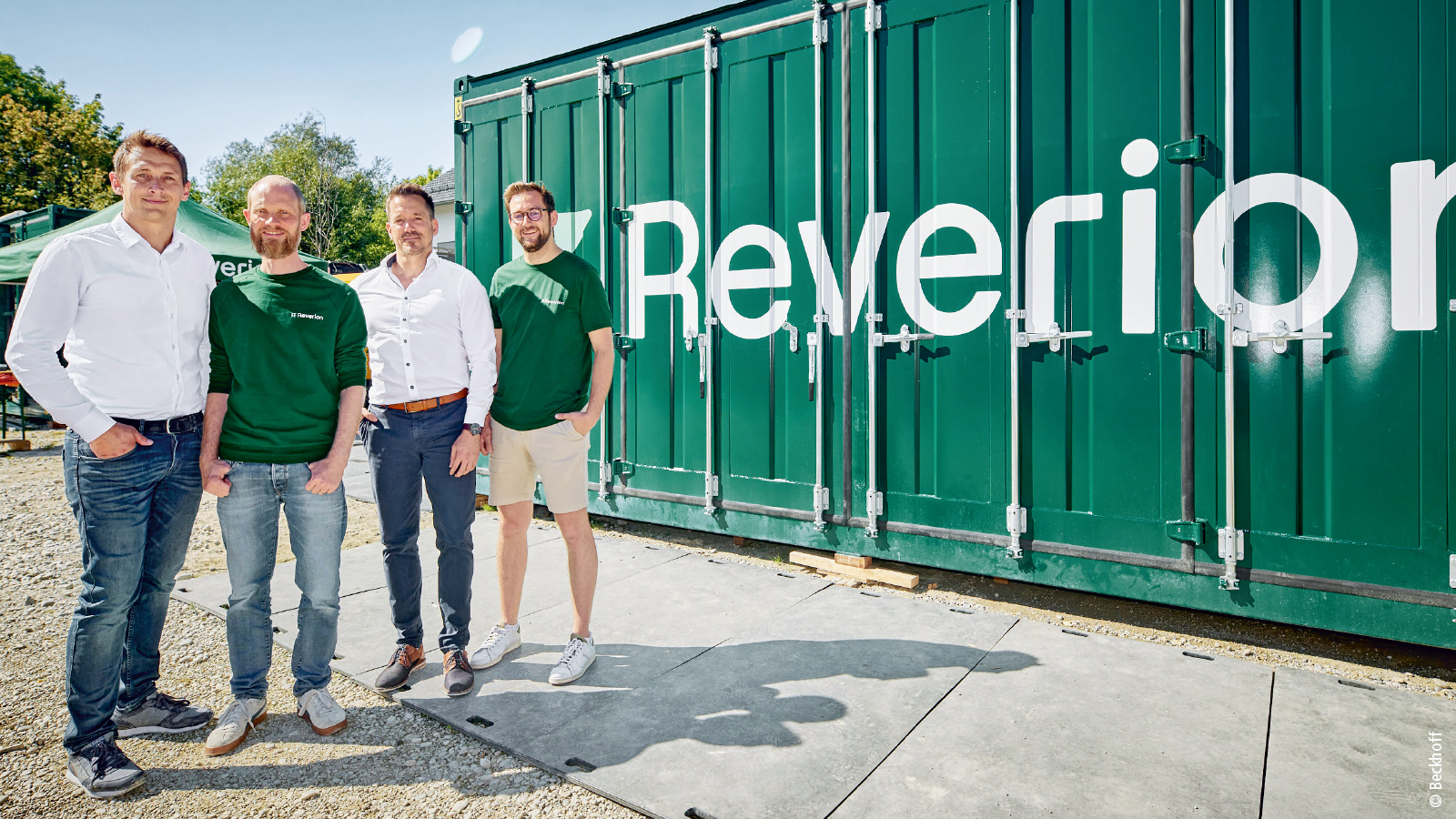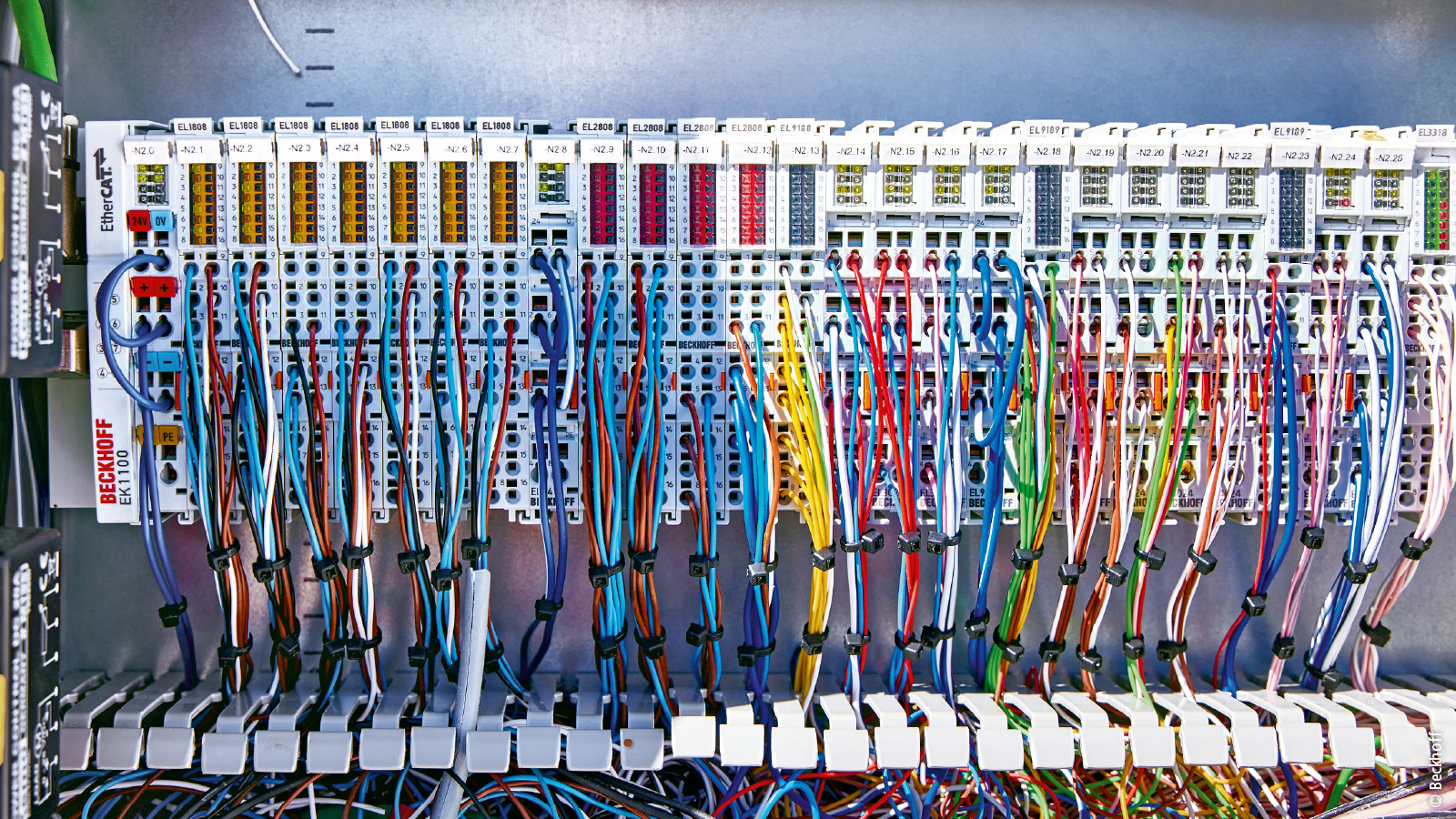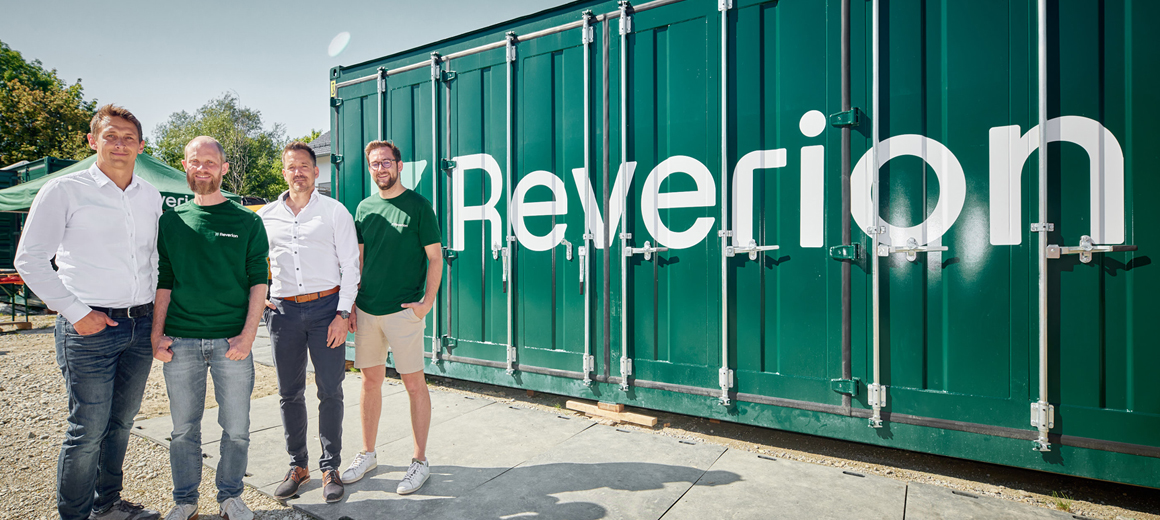

Control technology and data monitoring for containerized biogas power plants
Just flip the switch – that could quite easily be the motto of Reverion’s biogas power plants on the way to a climate-friendly energy supply. As if the compact design housed in a single transportable container didn’t make using this energy technology easy enough already, its exceptionally high efficiency of 80%, reversible usage option, and seamless data monitoring with PC-based control from Beckhoff all serve as prerequisites for achieving a high level of automation.
Founded in 2022 by Dr. Stephan Herrmann along with a small team of engineers and scientists from the Technical University of Munich, Eresing-based Reverion GmbH has already grown to more than 80 employees. Sven Bettendorf is an application engineer at Reverion, who explains that the company’s goal is to help solve two of the biggest problems facing humanity by creating a truly sustainable energy system and removing gigatons of CO2 from the atmosphere. The new generation of biogas power plants makes it possible to maximize the potential of biogas and also benefit from surplus solar and wind energy that would otherwise remain unused.
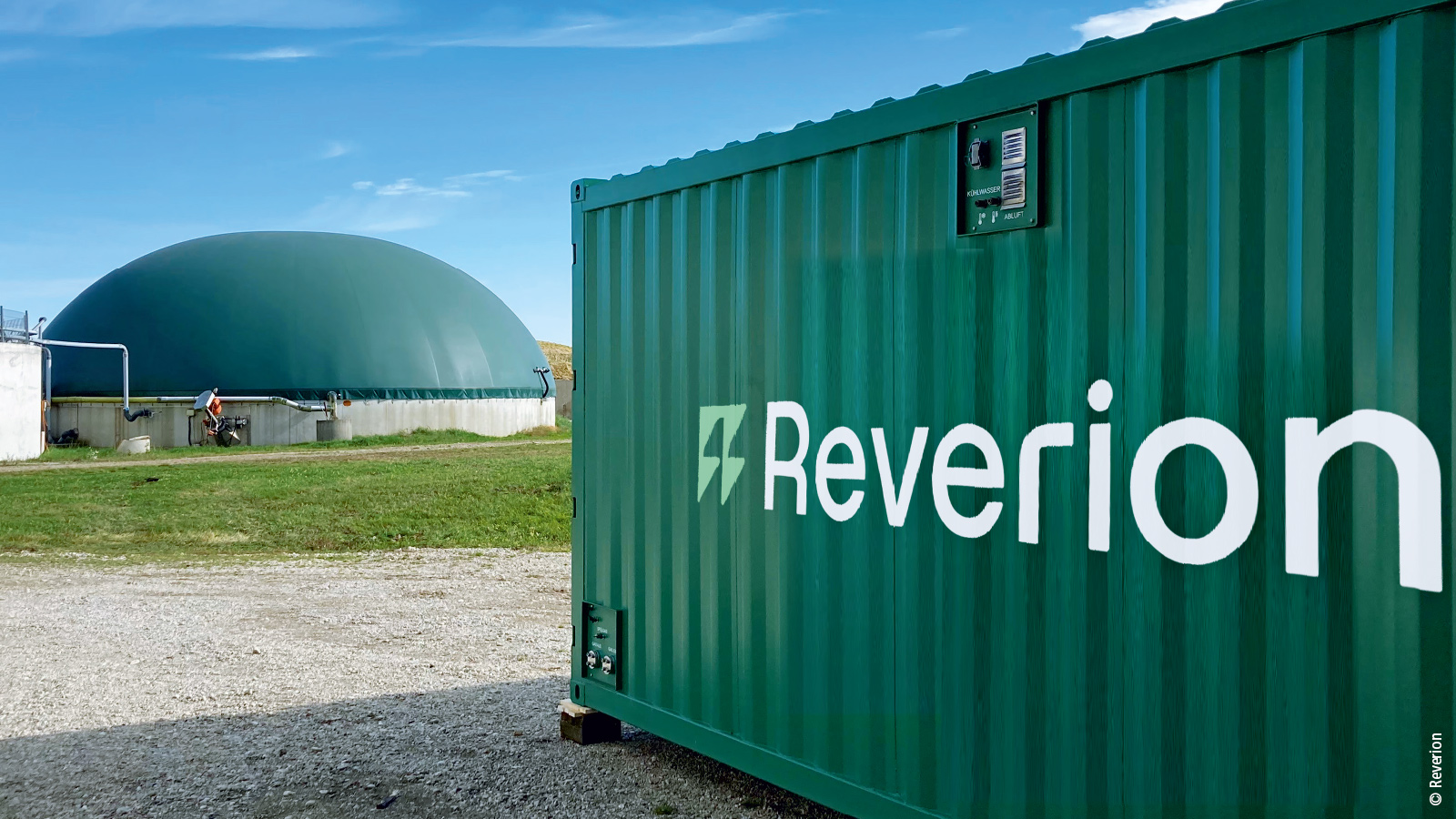
Highly effective and reversible use
Among the technical highlights of Reverion biogas power plants are their high efficiency and reversible usage, enabling not only power generation, but also the storage of biogas or green hydrogen when the grid is saturated. Addressing the subject of system efficiency, Sven Bettendorf explains, “The current market standard for the use of biogas is represented by combined heat and power plants; however, they only achieve an efficiency of around 40%. Alternative systems based on fuel cell technology, such as our biogas power plants, already achieve around 60%, whereas our systems are more efficient still at 80%.” The main reason for this enormous increase in efficiency is the high level of system integration and the associated exploitation of all optimization potential in the interaction of the many different process sequences. Julian Schauseil, Senior Software Developer at Reverion, is keen to emphasize the high potential significance for the energy supply: “What we are talking about here is quite relevant amounts of energy. If all biogas power plants in Germany were converted to our technology, the base load currently covered by coal-fired power generation could be completely replaced.”
Reverion’s biogas power plants offer excellent potential for flexible energy storage through their reversible operation capability. As Julian Schauseil explains, “When the energy supply grid is saturated, which can happen when we have optimal conditions for solar and wind energy, for example, the available power can be used for biogas production and storage. The gas network currently available for this purpose in Germany corresponds to around 100,000 times the storage capacity of available electrical storage facilities.” As a result, the biogas power plant not only serves as a local power plant that feeds electricity from biogas into the grid, but it can also act in reverse as a kind of buffer. One of the ways it does this is by generating biogas or green hydrogen when electricity prices are low or when there is an abundance of wind or solar energy, and then feeding power back into the grid when demand is high or prices are high. As a result, the power plant is able to achieve a negative carbon footprint. This is because, unlike in combined heat and power plants where the CO2 from the biogas is released uncontrollably back into the environment via the exhaust gases, this approach stores it in the system so that it can be bottled in food-grade quality for specific applications.
Sophisticated processes automated with PC-based control
Given the high level of integration and reversible usability, the underlying process technology encompasses numerous subprocesses and demands a substantial array of sensors. This is where high-performance automation technology is essential for reliable and optimized control of all the different process variants as well as seamless data monitoring. Reverion relies on PC-based control from Beckhoff, which was already being used for research work at the Technical University of Munich before the company was founded. As Sven Bettendorf explains, “In the beginning, easy access to the TwinCAT software was crucial, as this allowed us to carry out extensive testing without initially purchasing any software. Further major benefits included the simple expandability, including the Beckhoff TwinCAT visualization, and the outstanding support from the Beckhoff experts. When it comes to a new development like our biogas power plant, the flexibility and scalability of PC-based control represent particularly crucial factors. After all, the structure and processes change significantly on the way from prototype to series production.” Julian Schauseil adds, “It’s also worth mentioning the wide range of hardware options, which we consider to provide excellent value for money.”
In addition to reliable and safe system operation, the main aim of the automation technology from the operators’ point of view was to offer plug-and-play functionality. Streamlining to a simple on/off operation provides end users with remarkable flexibility, making it easier to replace existing energy supply systems with minimal effort. The container-based design simplifies the search for suitable installation locations, requiring only a compatible power line and connection to the gas network, both of which are already available to operators of combined heat and power plants.
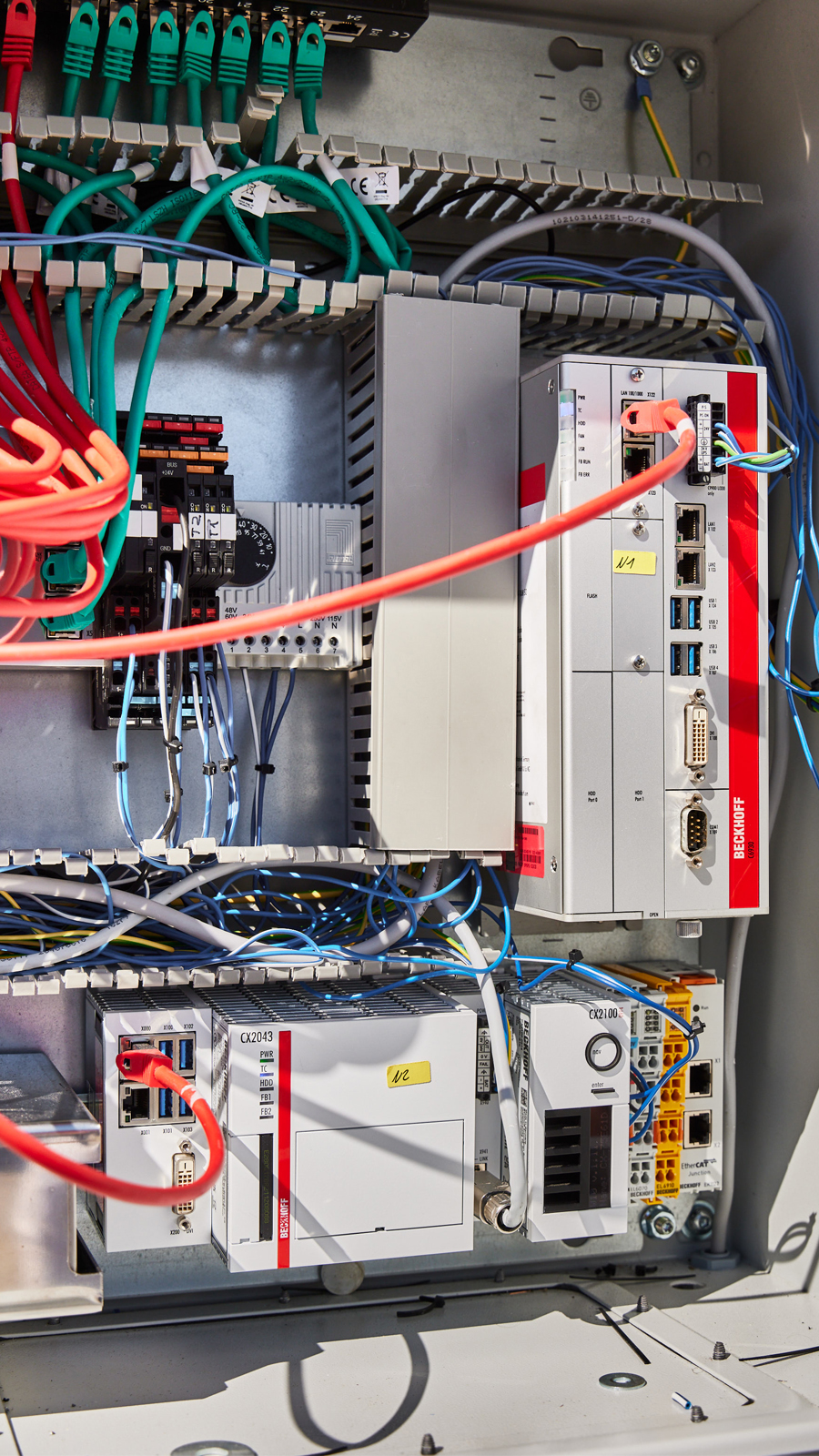
In terms of hardware, the automation technology has been implemented with two computers: a CX2043 Embedded PC (main control computer) and a C6930 control cabinet Industrial PC or, in future, a C6030 ultra-compact Industrial PC. Sven Bettendorf explains the reasons for this: “The idea to use two industrial PCs in communication with each other came about during system development, as the level of complexity increased and this approach made it easy to scale up the performance of the control technology and adapt it to the respective platform. The resulting redundancy also has its advantages in terms of reliability during operation.” The hardware package is rounded out by over 450 EtherCAT Terminals for around 1,200 sensors and 300 actuators. These include more than 220 analog terminals, such as the EL3024 (4…20 mA), EL3064 (0…10 V), EL3208 (Pt100), EL3255 (potentiometer), and EL3318 (thermocouple) analog input terminals.
The data from all of these I/Os is evaluated via the Beckhoff TwinCAT software, which, according to Julian Schauseil, can also be used to map such complex systems: “The object-oriented programming supported by TwinCAT, the automatic unit testing, and the modular software architecture are particularly advantageous for very extensive and continuously developed control programs. This makes it easy to introduce changes without creating errors in the rest of the program. The necessary abstractions can also be implemented well, which makes structuring much easier by encapsulating functions such as controller and analog value processing.” The communication functionality within TwinCAT is yet another important factor. This allows comprehensive sensor data to be easily and flexibly transferred to higher-level databases with TwinCAT 3 IoT Communication (TF6701) via the MQTT protocol.
Efficient and integrated visualization
Comprehensive data monitoring is used not only for process control, but also as a basis for further technical development as well as for generating the necessary evidence and billing-relevant metrics. To this end, Reverion has developed its own HMI extension for data monitoring, which was very well supported by TwinCAT according to Sven Bettendorf: “TwinCAT 3 HMI Engineering (TF2000) facilitates rapid overall application development and results in an easily expandable HMI. What’s more, the openness of the TwinCAT PLC and the training provided by the Beckhoff experts have been a huge help.”
The strong communication mechanisms within TwinCAT were pivotal for enhancing the visualization’s performance. According to Sven Bettendorf, efficient data processing is particularly important for this application, especially due to the large variety and volume of data and the numerous HMI controls required. Another requirement for the HMI and the HMI extension was simplicity in operation for both short and long-term recordings. The industrial PCs from Beckhoff provide sufficient computing power and main memory to process and display the large amount of data and facilitate instant switching between different HMI screens (with quad-screen capability) if required.
Continuous further development
With the first biogas power plant prototypes achieving an output of 100 kW, development at Reverion is certainly not standing still. Series production will start in 2024, and larger systems with an output of 500 kW are already in the pipeline. In addition to the use of biogas, Sven Bettendorf sees further market potential in hydrogen as a basic energy source. Julian Schauseil adds, “The container design and simple connection technology alone open up a whole new world of application possibilities. This supports the modularity of the energy supply very effectively, as higher demand can be easily met by deploying several systems.”
